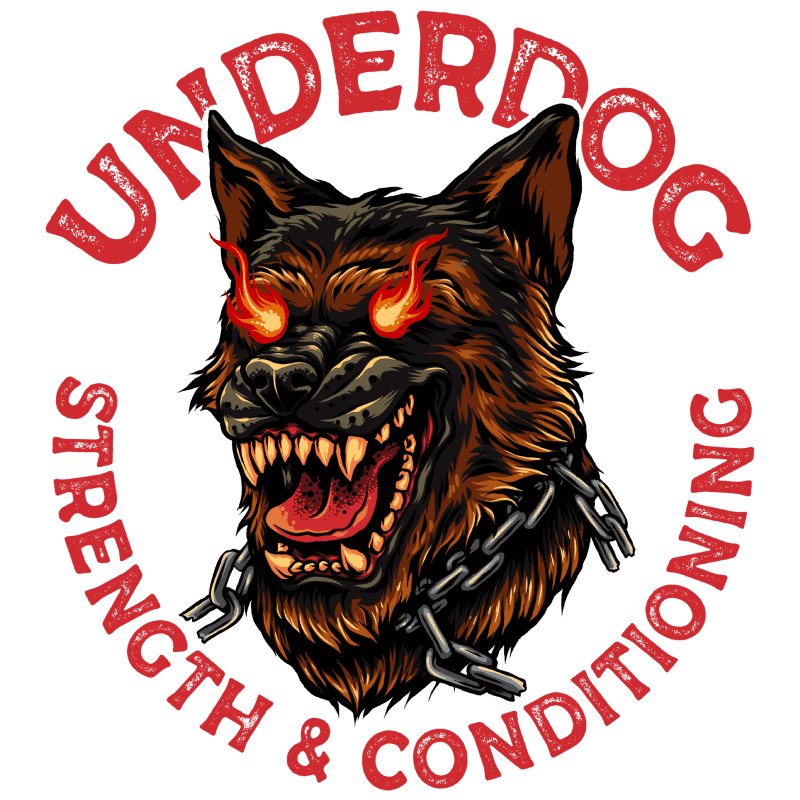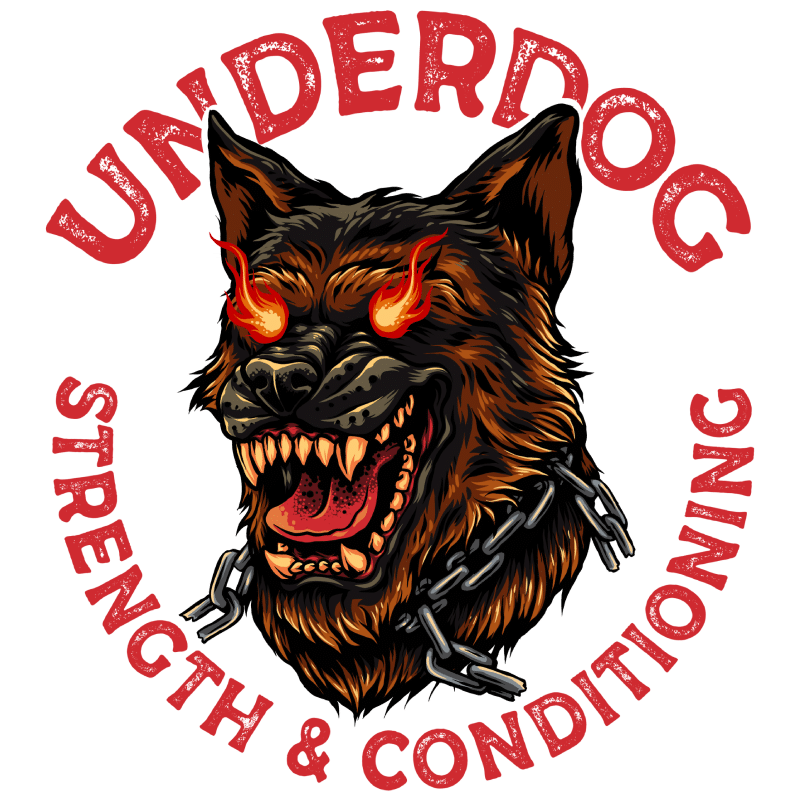What are PAILs & RAILs and what purpose do they serve in strength and conditioning? How do they aid in movement performance?
What are Isometrics?
Before we discuss the main topic of our conversation, we must first understand the definition and function of an isometric. An isometric is a form of contraction in which the joint angle and muscle length do not change. This is in contrast to the other forms of contraction where the angle will shorten (known as a concentric) and where the angle will lengthen (known as an eccentric).
There are generally two methods by which to perform an isometric effort. An overcoming isometric is performed when the joint and muscle work against an immovable object; and a yielding isometric is when a particular load is held in a static position.
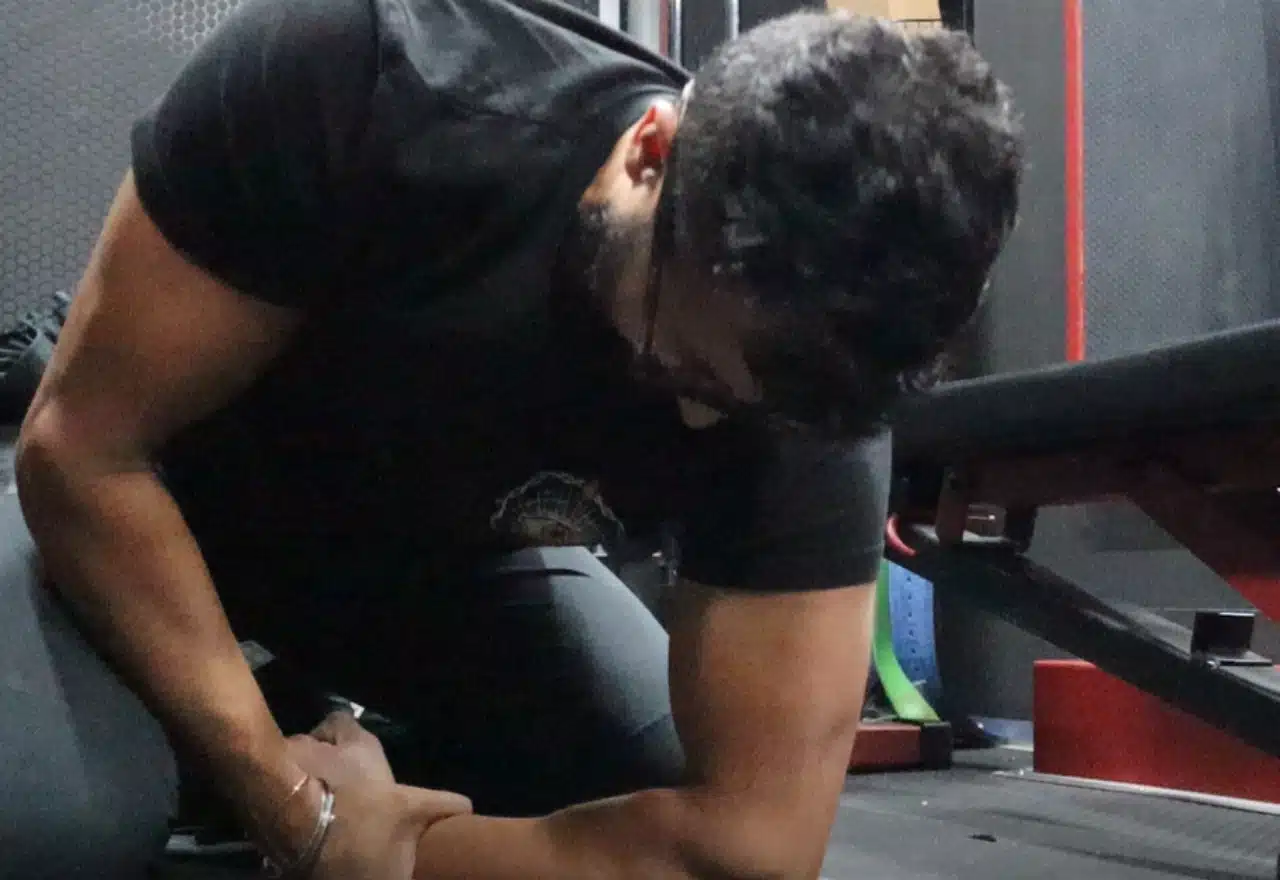
Image 1a. Performing an overcoming isometric using my right hand as an immovable object during the PAILs portion of this shoulder internal rotation set. The goal is to attempt externally rotating the right shoulder into the immovable object.
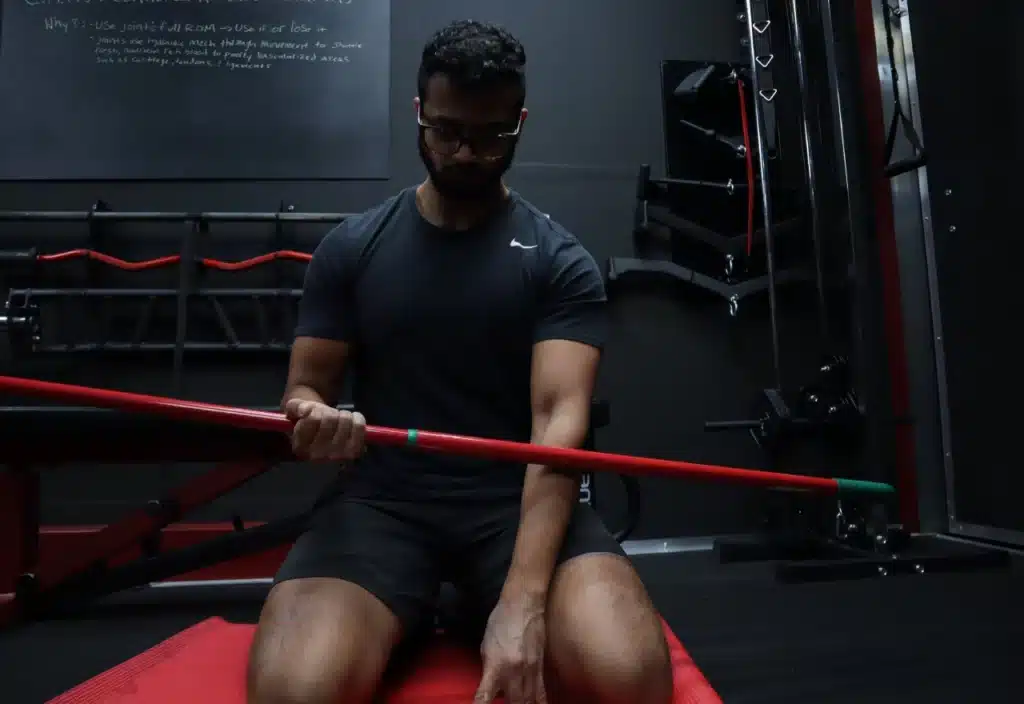
Image 1b. Performing a yielding isometric using a dowel during the RAILs portion of this elbow supination set. The goal is to attempt supinating the elbow as much as possible.
PAILs and RAILs
Progressive angular isometric loading (PAIL) and Regressive angular isometric loading (RAIL) are overcoming and yielding isometrics, respectively.
Our main objective through the utilization of PAILs and RAILs is to:
1. Teach the nervous system how to control progressively larger ranges of motion (ROM); and
2. Prepare body tissues to function in newly acquired ranges safely and effectively.
Let me explain each of these points in a little more detail. In the first objective, we are trying to shift the force-tension curve (pictured below) both to the right (force output at a greater joint angle) and to the left (force output at shortened joint angle). As we normally function with the most strength and control of our bodies in the middle of this curve, we are effectively trying to capture more strength and control of our joints by shifting the peak of the curve in both directions. Therefore, PAILs use isometric loading at progressive (larger) joint angles to simultaneously expand, strengthen and produce tissue adaptation in the newly acquired ranges. In contrast, RAILs would be using isometric loading at regressive (shorter) joint angles to generate adaptation in the body and nervous system. The second objective is satisfied through the use of isometrics. As we move our joints into unfamiliar angles and create high effort isometric contractions, we are sending a signal to the cells responsible for the formation of connective tissue in our bodies (the fibroblasts). This signal is sent to the joint through a mechanical stimulus (i.e the isometric force being applied) which is converted to electrochemical activity within the body to cause an adaptive response in tissue architecture (this process is termed mechanotransduction).
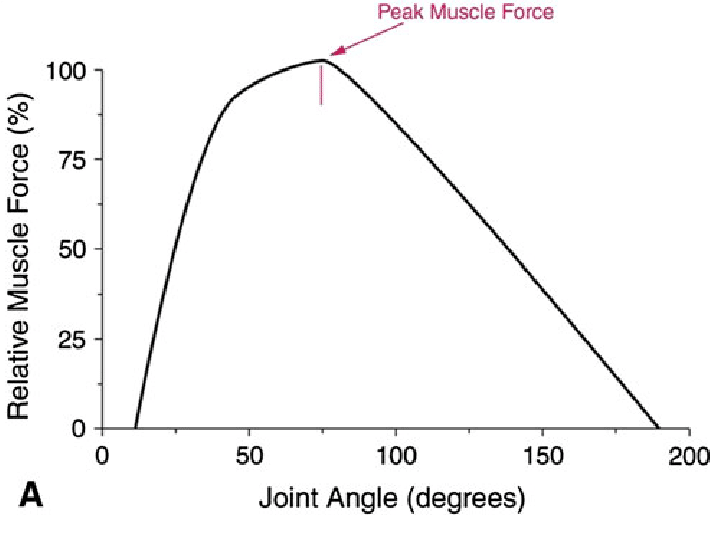
Fig 1. Length tension curve. This figure demonstrates that muscle force is optimal at mid joint angles and much lower at low and high joint angles. Our goal is to extend the peak of this curve in both directions to capture more strength at low and high joint angles.(credit:https://www.researchgate.net/figure/Length-tension-curve-muscle-force-is-optimal-near-the-midjoint-range-and-reduces-at_fig3_236048688). .
Why Isometrics?
1. Isometrics Allow Us to Bypass the Stretch-reflex of the Nervous System
The stretch reflex is a protective response of the nervous system which causes a contraction in the muscle being stretched to prevent possible injury such as a muscle/tendon tear or strain. This response can be overridden if the muscle that is being stretched is activated isometrically which convinces the nervous system that we still have control over that particular muscle length. This causes the nervous system to allow a small temporary increase in ROM of approximately 10-15 degrees.This temporary increase of ROM is what we work on through active inputs (such as Passive Range Holds, Passive Range Lift-offs, and Hovers) to solidify into our useable active ROM.
2. Isometrics Activate Motor Units Effectively
For us to teach our nervous system how to use the new ranges we have acquired (via PAILs/RAILs), we need to ensure maximal motor unit recruitment. This maximal recruitment is generated by slowly ramping up our PAILs set from 10% maximum voluntary contraction (MVC) all the way to 100% MVC, or the greatest safest effort for that client and their particular goals. The gradual ramp in intensity of the PAILs contraction ensures we capture a greater number of motor units and therefore send a stronger signal for adaptation in the tissue to the nervous system. The ability to activate as many motor units as possible may take some practice as it is in itself a skill and is referred to as neural drive, or irraditation. Those who are used to lifting heavier weight, such as powerlifters, may find it easier to increase their irradiation to 100% as they do so on a more regular basis.
In short: the more we irradiate → the stronger the signal → the more likely the adaptive physiological response (i.e increased ROM or muscle tissue depending on the goal).
3. Builds Strength and Tissue Adaptations in Long/Short Ranges
By using isometric contractions at outer ROMs, it is teaching the nervous system how to function at that range. An isometric contraction with 80% MVC or more has been shown to increase strength; therefore, it is a requirement for increasing one’s mobility. As we systematically progress to greater and greater angles, we increase the strength in those ROMs as well.
4. They are Safe
Isometrics are the safest form of contraction because they can generate maximal motor unit recruitment without exposing the joint to shear forces due to the joint angle and muscle length staying consistent throughout. In both concentric and eccentric contractions, one side of the joint is disproportionately loaded compared to the other which will cause a shearing effect across the articulation (the joint) which may lead to damage.
Additionally, isometrics do not induce inflammation because they do not increase inflammatory mediator release during contraction.
In Conclusion
PAILs and RAILs are a method of using both overcoming and yielding isometrics to increase and strengthen ROM. The ability to control oneself in larger ROMs facilitates increases in muscle mass, strength and overall athleticism. PAILs and RAILs can also be used as treatment to rehabilitate lost ROM due to injury or trauma, and much more. Their efficacy in regards to increasing human performance and mitigating the probability of injury, whether it be in our day-to-day lives or out on the field, cannot be understated.
If you’d like to learn more or would like to book a free consultation, visit my website at www.underdogunleashed.com.
If you would like to learn more about the FRC model, visit www.functionalanatomyseminars.com.
